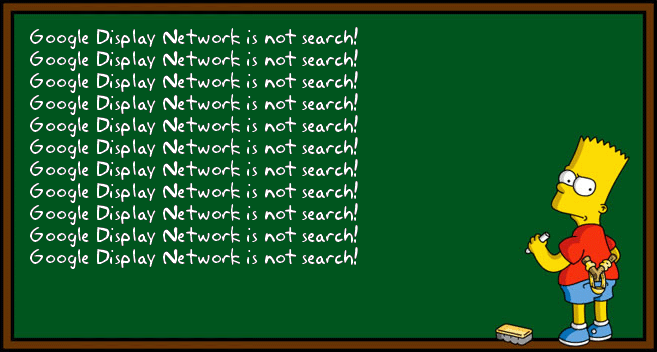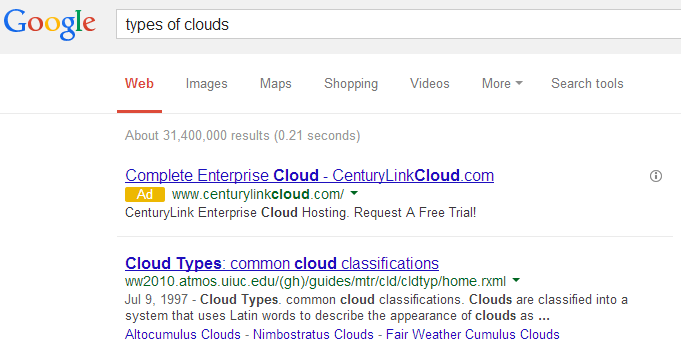 “Paid search is slowly failing B2B marketers.”
“Paid search is slowly failing B2B marketers.”
I never expected to say that. For years paid search has been one of the most cost-effective media channels for B2B lead generation. But over the last year, I have seen or heard case after case of B2B marketers struggling to make paid search, and Google AdWords in particular, cost-effective.
Too often, an effective search program was just allowed to run with only reactive bid adjustments.
It isn’t time to give up on search, but it is time for B2B marketers that are struggling with search programs to look beyond their standard optimization routines. If you have a search program that needs to be revived, or you are starting a new program from scratch, check that you don’t make these nine mistakes.
1. Forget About Negatives
Aggressively adding negatives to ad groups and campaigns is one of the most frequently overlooked ways to cut waste from your program.
Tip: Don’t use Google’s report to add negatives. If your ERP Software ad shows up on searches for Free ERP Software (and your software is far from free), you don’t want to add Free ERP Software as a negative, but this is exactly what Google’s “add as negative” function will do. Instead manually add just free as a negative keyword.
2. Just Use Broad Match
Broad match burns your budget on searches you would never intentionally bid on. Because broad match pulls in untargeted ads, your quality score drops, your cost increases, your performance drops, you optimize by (incorrectly) lowering your bid. The cycle continues to repeat until your ad eventually only appears on completely untargeted, but broad matched, searches that other advertisers are not bidding on.
I stumbled across a great example recently where this scenario appears to have been playing out. In the screenshot below, CenturyLink has the only paid search result for the search types of clouds. From the copy, CenturyLink is marketing enterprise or business cloud computing or hosting services. Everything else on the page is about clouds in the sky. However, trying multiple variations of searches for cloud computing, business cloud, enterprise cloud, or cloud hosting, I was not able to find a single CenturyLink paid search ad.

Thanks to broad match, CenturyLink’s ad is running out of context and they no longer are effectively competing for the targeted keywords they actually wanted to bid on. Most likely someone at CenturyLink now believes cloud computing is not cost-effective in search. Ouch.
3. Leave Display On
Repeat after me: “Google Display Network is not search.”
Google has effectively convinced B2B marketers everywhere to think of the Google Display Network like search. Instead of continuing to invest in other lead generation programs, marketers put more money into search and expand search programs to include the display network (what used to be called the content network).
If your search program is struggling, pull a report that segments performance by core search, the search network and display. Three seconds later you will be turning the display network off.
4. Don’t Use Extensions
Even before Google’s recent Ad Rank updates, ad extensions were a way to include multiple offers in a single search ad. When you are limited to just 95 characters in your core search ad, extensions more than double the space available and can take you from 1 to 5 offers.
Consider a search for B2B lead generation. It is a specific search but it doesn’t indicate very clearly what the searcher is looking for. A comparison of different lead generation solutions? An educational Lead Generation 101 overview? A proposal for a lead generation program?
With ad extensions, you can respond to each of these potential scenarios in a single ad. This is a great place to use your buyer journey research on questions that need to be addressed throughout the buying process.
5. Run One (or Two) Big Campaigns
In Google, campaigns are one of the best tools for allocating budget but too many mid-sized marketers still have just one or two big campaigns. Unless you never hit your budget caps, this means your best performing and worst performing keywords and ad groups are being limited based on budget the same way.
Instead, separate your best performing ad groups from the rest and set your budget caps so you spend everything you can on the best performing segments of your campaign. Impression share reporting, specifically the impression share lost based on your budget, will let you estimate what the impact of this change will be.
6. Overlook Bid Adjustments
Mobile is the obvious bid adjustment for most marketers, but don’t ignore day, time and location adjustments as well.
Are you running a single program targeting both the US and Canada? If you are, test lowering your bid slightly in Canada, where competition is often lower for B2B marketers. Have you historically turned off your search program on nights or weekends? Unless your program was mapped to your call center hours, test a reduced bid in place of turning your program off completely. It will likely become one of your top performers.
7. Ignore Your Landing Pages
Paid search optimization cannot end with what is in the search engine. Some of the biggest performance improvements will come from optimizing your landing page as well.
The difference between a quickly put together landing page and one that has been tested and refined can be an order of magnitude. While that type of improvement doesn’t come quickly, the impact can be dramatic over time.
In case you wondered, yes, I have seen programs with an order of magnitude, or 10x, improvement in conversion rates over time. It required both design and layout testing as well as content testing. Improvements of 2x to 5x are more common.
8. Driving Traffic To A Different Domain
Your corporate site matches your brand or company name and it lets someone know what site they are going for. When you drive traffic to a different domain you are giving up the advantage of any brand recognition you have built with your audience.
Multiple domains introduce a host of experience and technical issues as well, particularly as more browsers reject third-party cookies by default.
9. Accepting A Low Quality Score
Nine times out of ten, a low quality score means there is room to significantly improve your program results. If you start by fixing the mistakes above, your quality score will improve. Where it stays low, it is a flag for areas that warrant additional time and testing.
Too many B2B marketers give up on search or accept mediocre search marketing results when they just need to fix commonly overlooked problems in their programs.
Your Turn
These are the mistakes I’ve seen (and on occasion made) most frequently. What mistakes do you see B2B marketers making in paid search today? Share your examples in the comments below or with me on Twitter (@wittlake).
Bart Simpson chalkboard image created at Add Letters

Pingback: 9 Crippling Mistakes B2B Search Marketers Make ...()
Pingback: 9 Crippling Mistakes B2B Search Marketers Make | Social Savvy Business()